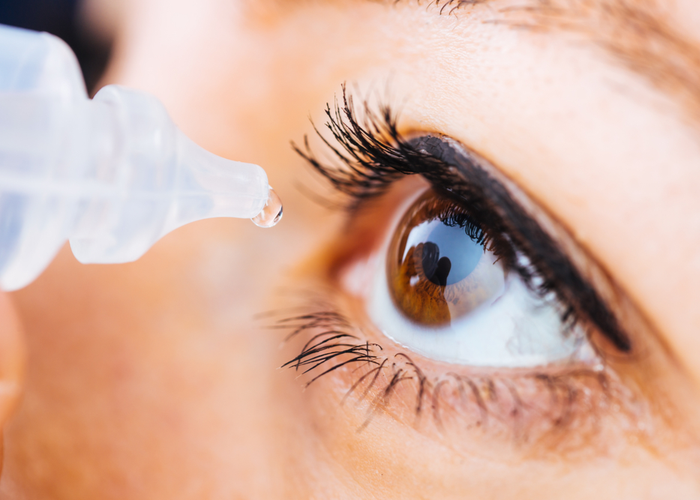
Ever have sore eyes? Feel like you need some relief? There are many dry eyes symptoms including filmy, sore, itchy, dry, stingy, watery eyes.
If you’ve ever had a piece of dust in your eye, you’ll know how sensitive the eyes can be . The sensation can stop you from enjoying time with friends, or getting things done at work. Ever seen the rows of eye drops available at the pharmacy? How do you know which ones are best to treat dry eyes?
You’ll often find these drops available over-the-counter:
- Artificial Tears
- Allergy Drops
- Redness Drops
- Saline Drops
Allergies often cause the eyes to feel itchy. Not just the area near the lashes, but the whole eye. You may notice wateriness or sneezing as well. Usually, you’ll have some clues like patting the neighbours pet, or gardening on a dusty/windy day. Allergy drops are available in both prescription or non-prescription forms.
Artificial tears help your eyes to feel temporary relief from soreness. But what do you look for?
Here are five things to avoid in artificial tears:
- 'Clear’ or ‘Red Eye’ drops - Drops with Naphazoline or Tetrahydrozoline can make your red eyes worse with regular use. This is because the blood vessels become dependent on the ingredients. If you stop them, your red eyes can actually look worse.
- Preservatives - Drops with preservatives are designed to make them last longer. They’re designed to kill germs that get inside the bottle. However, preservatives can be toxic to the eye with frequent use. There are several drops in a bottle that don’t have preservatives, or become preservative free when the drop is exposed to air. Look for preservative free where possible.
- Non-lipid drops - The normal tear film has an oily layer on the top. This is like a roof on a house. It protects everything underneath from evaporation. Over 86% of people with dry eyes have less of the oily layer. Look for eye drops with lipids, such as Perfluorohexyloctane or mineral-oil based drops. These give longer relief from dry eyes.
- Allergy drops - If you have dry eyes, avoid putting allergy drops in. They may help itchiness. However, they may wash away some of the normal oily layer in your tears, and make dry eyes worse.
- Conjunctivitis drops - Conjunctivitis drops are made to fight eye infections. However, they don’t help dry eyes or inflammation. Preservatives in these drops can also make dry eyes worse
If you need relief for sore eyes, you can make an appointment online through MyHealth1st.
So what should you look for in artificial tears?
Look for drops that are:
- Preservative-free
- Lipid based
- Hypotonic (less salty)
Natural eye drops can also be very effective. You may have heard of manuka honey drops . These help reduce inflammation and improve the quality of your natural tears. Drops with Propolis are also derived from honey and can be effective.
What else should you look for? Sore eyes often come from a buildup that sits along your eyelashes. Without a microscope, it can look like dust or sleep. Bacteria produce this buildup which falls into the eyes and irritates them.
Look for an eyelid cleanser to clean your eyelids. This may be more important than putting drops into your eyes. The best eyelid cleansers have hypochlorous acid or tea tree to reduce the buildup of bacteria. Regularly cleaning your eyelids can help to reduce the upstream causes of dry eye .
When should you see an Optometrist or Ophthalmologist?
If you’re using eye drops regularly for more than two days, see your Optometrist or Ophthalmologist. You can get faster relief from dry, sore eyes. This also helps you avoid other causes of sore eyes, such as serious infections or inflammation in your eyes.
Your Optometrist or Ophthalmologist can also prescribe prescription eye drops, if needed. These include topical cortisone, cyclosporin, lifitegrast or other anti-inflammatory drops.
Eye drops are more than just saline. Your eyes and eyesight is important. Your Optometrist or Ophthalmologist can help you to look after them.